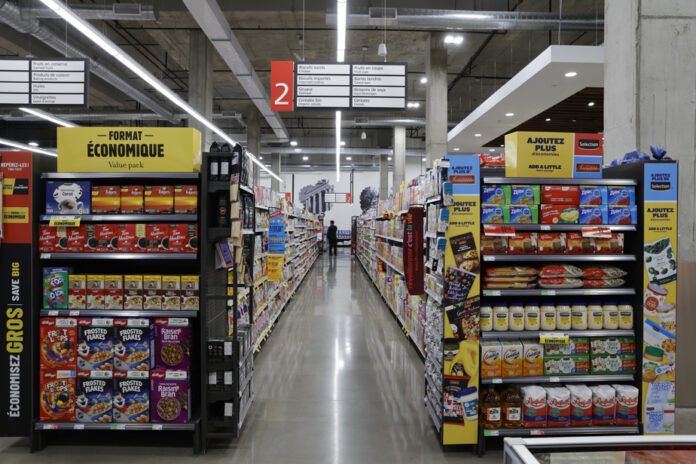(Montreal) Canadians are buying less food, have changed their grocery shopping habits and even changed stores to try to adapt to the harsh reality of runaway food price inflation.
A Statistics Canada report points to a recent survey showing that not only did 86% of respondents change their spending habits, but also that 71% said they bought or used fewer groceries than they did. ‘previously.
For Professor Sylvain Charlebois, an economist and agri-food expert at Dalhousie University, these figures call for reflection: “How can we explain this? There are two hypotheses of course: the first would be that people are eating less, but maybe people are wasting less too,” he explained in an interview with La Presse Canadienne.
One thing is clear though: they don’t shop the same way anymore. Citing an analysis from Retail Insider magazine, Statistics Canada finds that “brand and store switching has become a widespread practice.” Thus more than half of buyers now turn to private labels, also called house brands, for their food.
“As we say in good French, there is ‘trading down’ going on. We opt for lower quality products. The figures are showing it more and more: private labels will take up more space,” notes Professor Charlebois.
Also, consumers are switching grocery stores, looking for low-cost options, such as discount groceries, to make the most of their limited food budgets. The giant Loblaws has taken a big step to adapt to this movement, he who is to complete the conversion of about thirty Provigo grocery stores into Maxi.
“I had the chance to speak with Loblaws last week and the results are amazing in Quebec,” says Sylvain Charlebois. As soon as there is a conversion to Maxi, the turnover for the store practically doubles. So we really see that the supply is adapting to a more economical demand. »
We can understand the shift of the big banners, because not only are consumers no longer loyal to them, but they are completely moving away from grocers to go to what Statistics Canada calls general merchandise stores, a group of stores including clubs- warehouses, supercenters and other general merchandise retailers.
“You see the consumer going to places where you know the prices are better, like dollar stores, non-traditional discount [discount] stores like Giant Tiger, Walmart, Costco, etc. They are the ones who earn a lot these days, “said the economist.
The figures reported by the federal agency do not lie. At the start of 2021, when prices began to rise, food stores captured 74.3% of food and beverage sales, compared to 21.6% for general merchandise stores. By the end of 2022, grocers saw that number drop to 70%, a drop of 4.3 percentage points while general merchandise stores saw their share of food purchased from stores fall to 25.9%, a drop of 4.3 percentage points. mirror increase of 4.3 percentage points.
These variations are not insignificant when we know that retail food and beverage sales represented more than 143 billion in 2022 according to the latest report from Farm Credit Canada. This variation of 4.3 percentage points thus represents just over 6 billion.
Sylvain Charlebois offers this advice: “I always say: it’s the rule of three, three stores in three weeks. Every week, you go to a store, you alternate, a house specialty store, then a discount store, a general merchandise store, when it is possible to do so. »
These moves toward cheaper goods, discount groceries, and general merchandise stores reflect deep economic anxiety among consumers about prices that, in the spring of 2023, were 20% above levels seen two years ago. earlier, according to Statistics Canada.
Already, in the spring of 2022 before the inflation rate peaked, the federal agency’s surveys showed that “nearly three out of four respondents said that the rise in prices had an impact on their ability to meet their daily expenses. For many families, rising food prices were their biggest concern. Two-thirds of respondents said they were very concerned about rising food prices, while 4 in 10 respondents said they were more worried about rising food prices than price growth in other areas categories (such as housing and transportation). »
It will be difficult to curb this inflationary surge because it is due to a multitude of factors. Rising energy prices lead to significant cost increases for agricultural producers, transportation, storage and food processing, and so on.
Poor growing conditions in Canada and the United States in 2021, rising input costs such as fertilizers, supply chain disruptions and increases in wholesaler and retailer margins all contributed to the steady growth food prices. The population has certainly found ways to adapt, but these have limits, as does the household budget.















